05
Oct
The lamp that raised a stink joins Ripon's list of rare heritage attractions
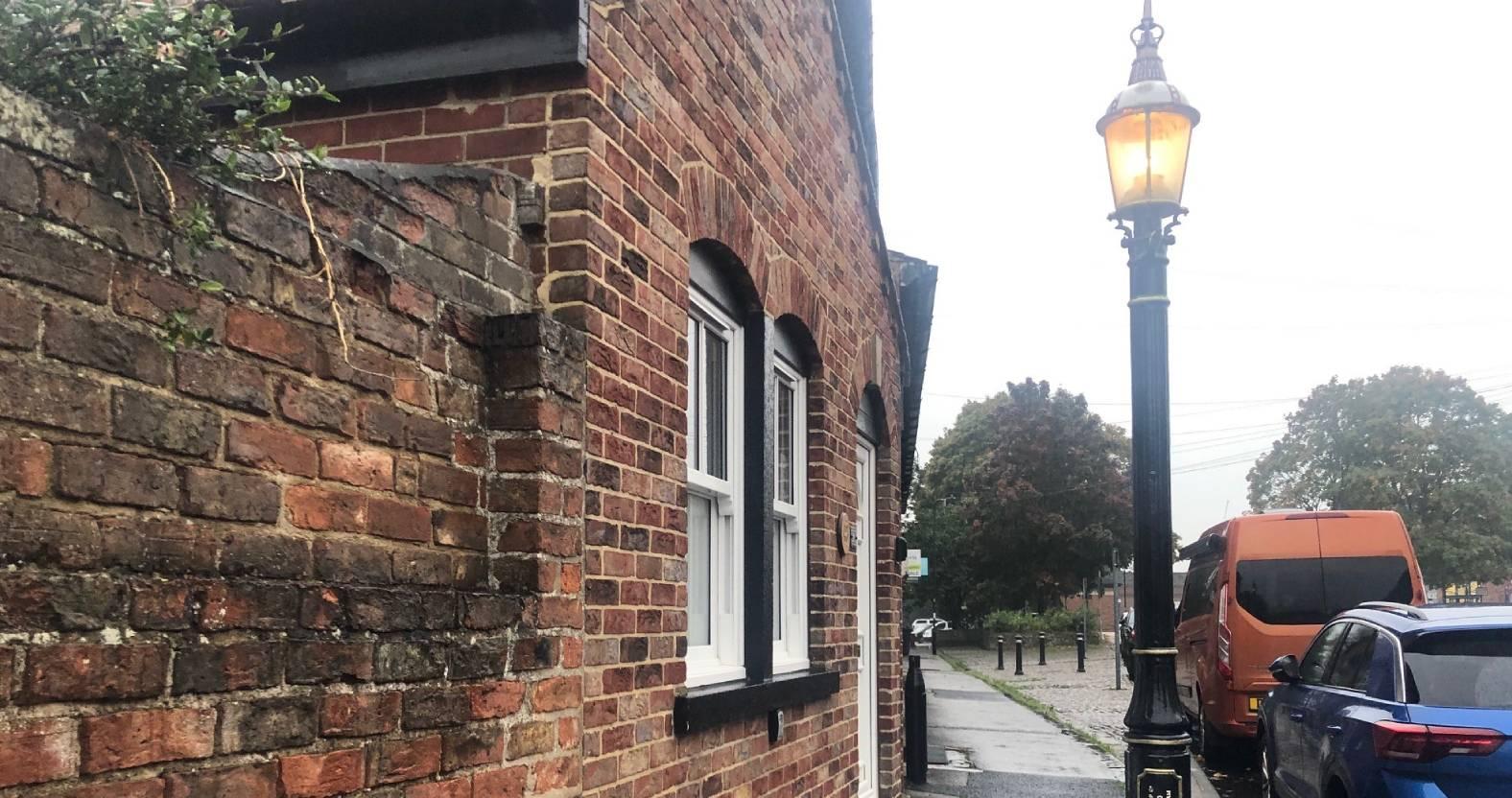
This article is free to read. We publish about 100 articles a week all exclusively focused on local news. Please support independent local journalism by subscribing here. It costs as little as 14p a day.
As listed buildings in Ripon go, they don’t come much stranger than a cast iron curio that stands proud in Victoria Grove.
The sewer gas destructor lamp, proved a rare sight in Ripon, but in the South Yorkshire city of Sheffield, was seen in abundance in late Victorian and Edwardian times.
Lit by town gas, the lanky lamp did its job by quite literally raising the stink from street level and dispersing the noxious biogas odours high above the heads and noses of passers-by.
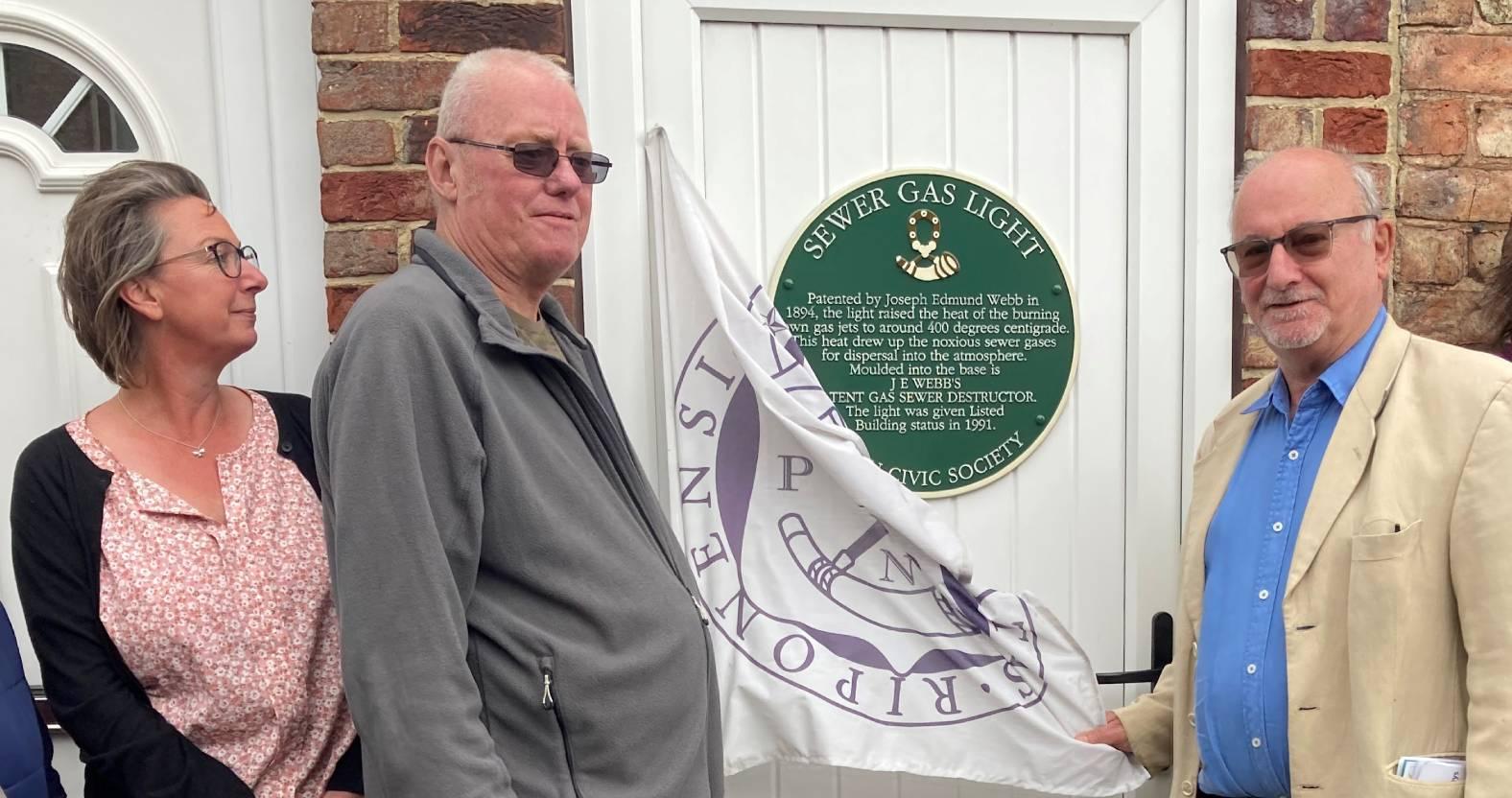
Pictured at the unveiling are Ripon BID manager Lilla Bathurst, the co-chair of Ripon Civic Society, Richard Taylor (right) and Stephen Anderson, the owner of Gas Light Cottage, where the plaque dedicated to the sewer gas destructor lamp is now in place.
The ingenious dual purpose ‘pong buster’ which illuminated streets while eliminating smells, was invented by Joseph Edmund Webb of Birmingham and granted a patent in England in 1892 , with an American patent following in 1895 as sales went Transatlantic.
Almost 100 years after its invention the sewer gas lamp in Ripon was registered in 1991 by Historic England as a grade two listed building and its place in the city’s deep social, industrial and economic history, has now been recognised and put on the map, with the unveiling of a green plaque by Ripon Civic Society.
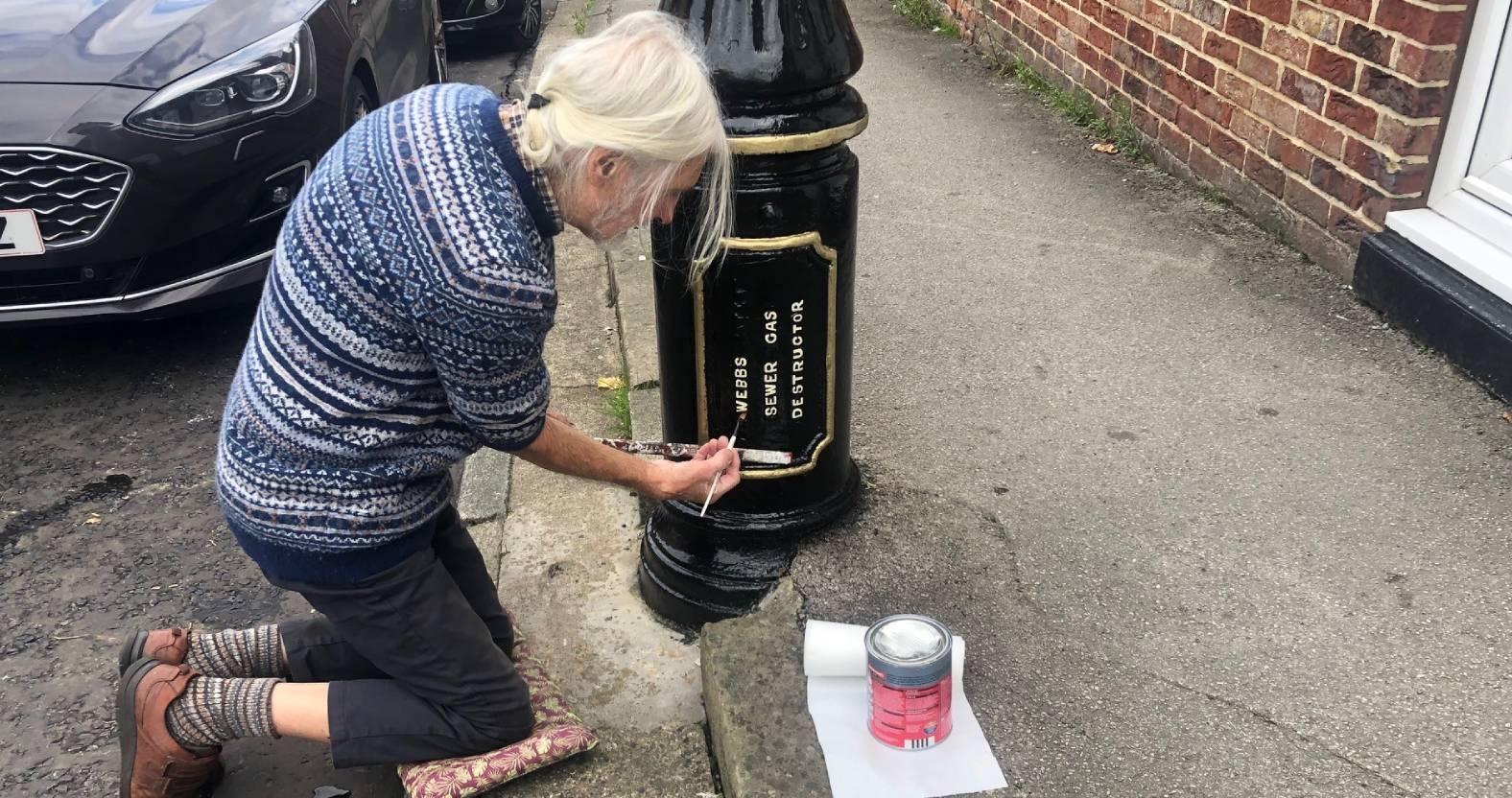
Neill Clayton illuminated the wording on the base of the lamp.
'Not to be sniffed at'
Society co-chair, Richard Taylor, told the Stray Ferret:
Our plaques can be seen, on or near, some of the city's finest and most iconic buildings and structures - including Spa Baths, the Wakeman's House, the Cabmen's Shelter and the clock tower, built to celebrate Queen Victoria's Diamond Jubilee in 1897 - but alongside these illustrious heritage assets, the more humble utilitarian lamp is not to be sniffed at.
Each listed building where a green plaque is in place is like a piece in Ripon's jigsaw, providing school parties, residents and visitors, with a snapshot of the city's remarkable history, from medieval times to the industrial revolution that was at full steam in the Victorian era.
The short, but stylish Edwardian period saw the creation of the city's Spa Quarter, which subsequently fell into disrepair, but is now enjoying a renaissance with The Inn Group's investment in the former Spa Hotel and rejuvenation works underway at the nearby Spa Baths.
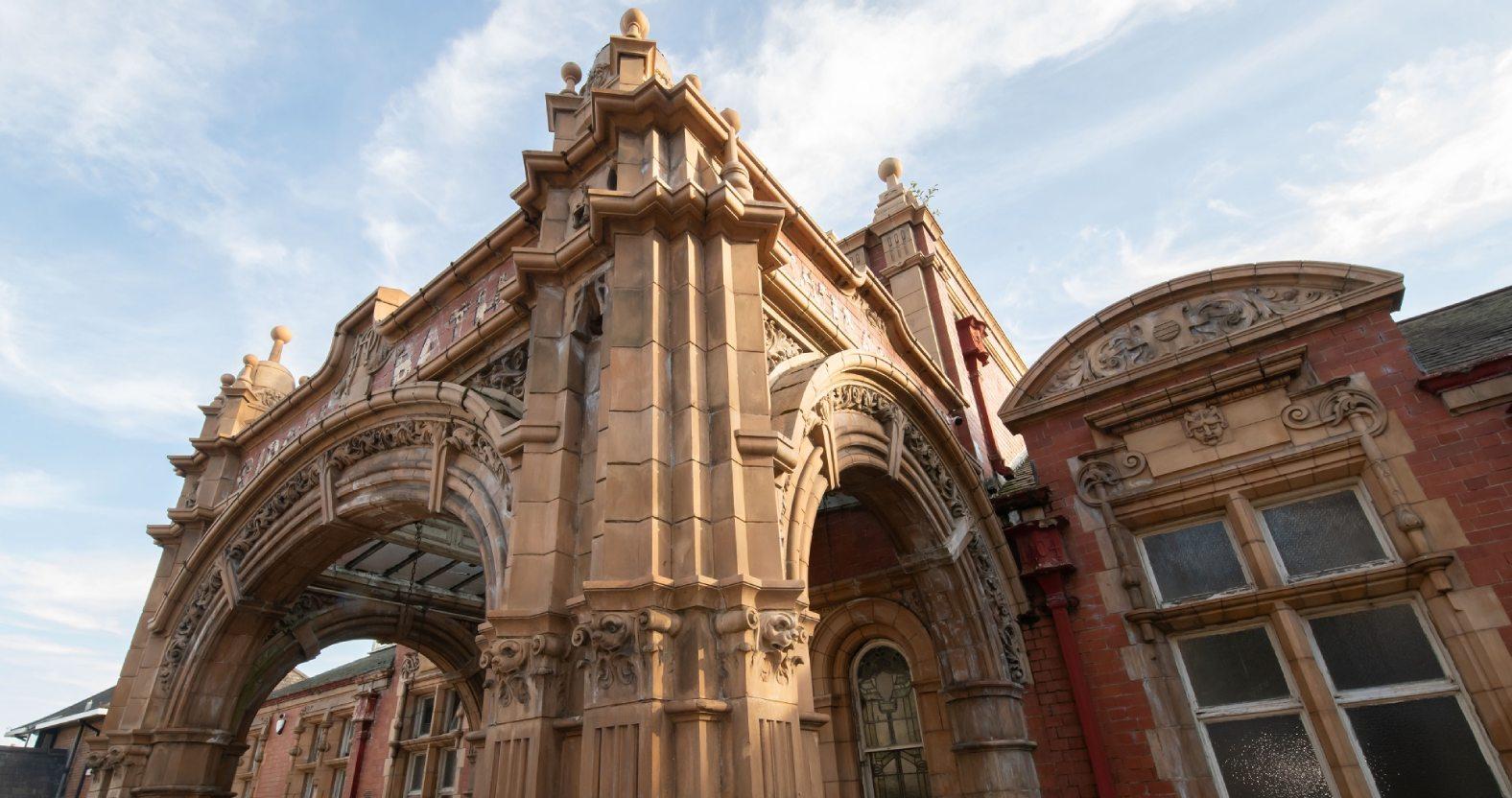
Ripon-based investment and development company Sterne Properties Limited, has plans to return the Spa Baths building to its Edwardian splendour.
Mr Taylor, added:
People looking forward to seeing new life breathed into Spa Baths arived in droves for hard hat and high vis guided tours, that took place during last month's series of Lottery-funded Heritage Open Days.
The public's fascination with the city's built environment and social history, took them to diverse locations across our ancient city.
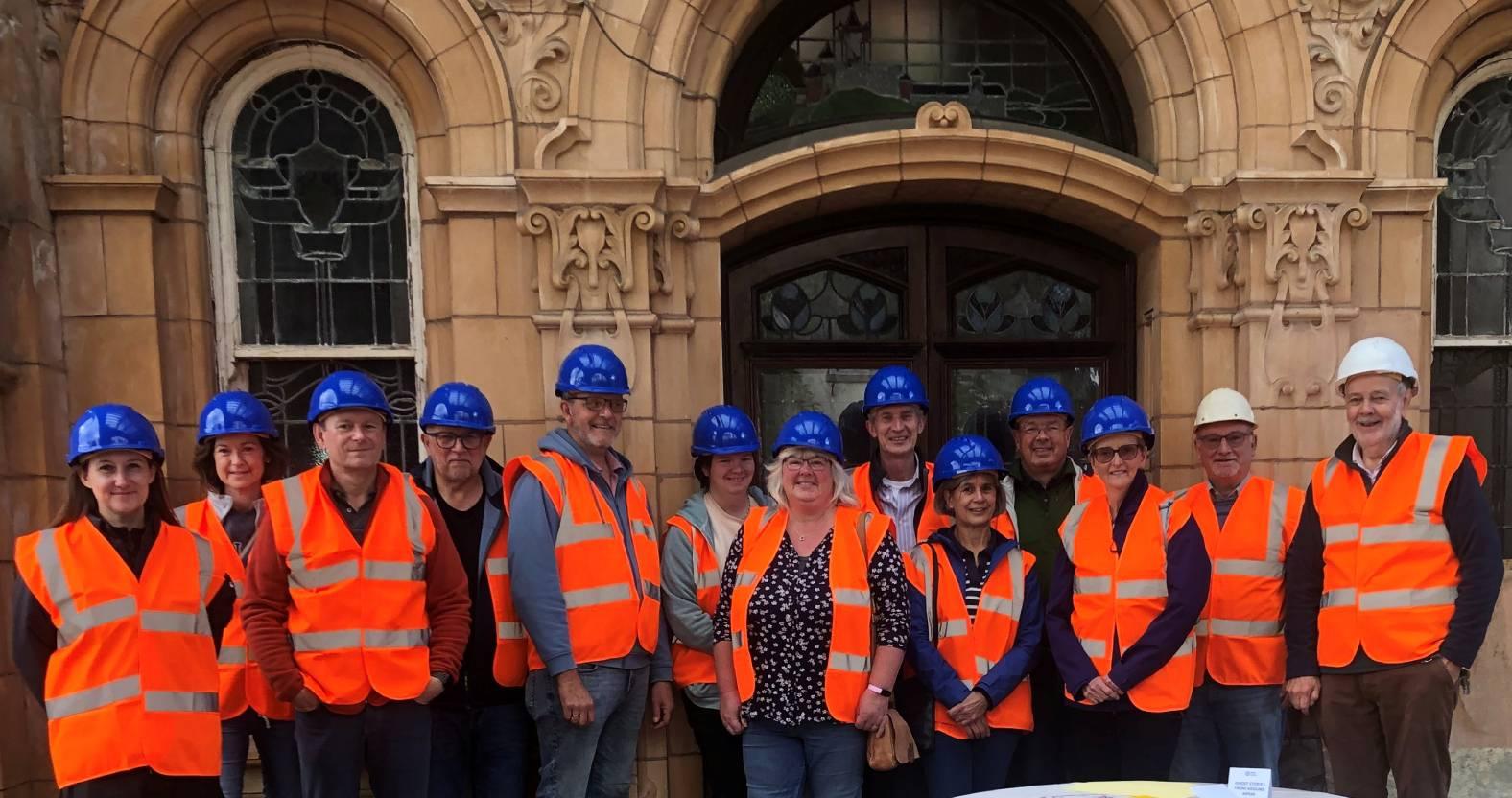
The hard hat guided tours of Spa Baths proved extremely popular.
Ripon's heritage buildings were home to many colourful and charismatic characters - among them Thomas Stubbs, who combined his work as Master of the House of Correction with a passion for collecting curios.
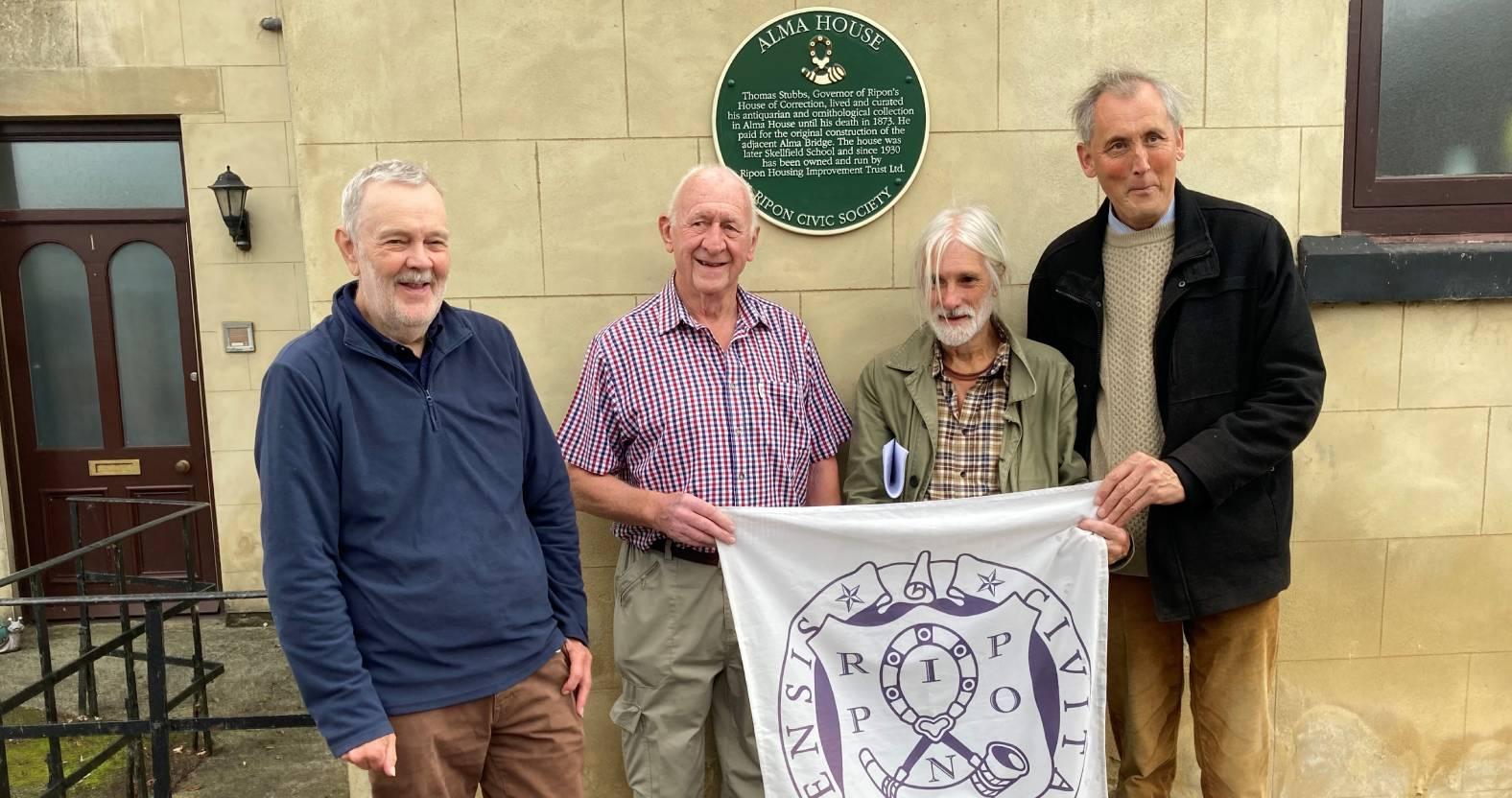
David Winpenny (left) and fellow civic society members Neill Clayton and Robert Addyman (right) pictured at the Alma House plaque unveiling with John Parker, chair of Ripon Housing Improvement Trust, which owns the property.
His former Skellfield House residence (now known as Alma House) in Low St Agnesgate, nestles near Alma Weir and the bridge that stretches over the Skell to the Water Rat pub and during his time there the building was packed to bursting with a host of unusual items.
At the unveiling of the plaque, which includes a thumbnail sketch of his life of correction and collection, civic society co-chair David Winpenny, said:
Stubbs spent 60 years amassing a vast number of stuffed animals, specimens, objects, relics and fossils.
Among the items gathered (by the self-taught taxidermist) were, a female roebuck with fawn, a pair of small white leverets, a couple of stoats in their winter garb, a Scottish wildcat, a kestrel hawk, a pair of coal titmice and two short-eared owls.
'Heritage at the heart of Ripon'
Ripon BID manager Lilla Bathurst has welcomed the two new additions to the city's heritage map.
She said:
Heritage is at the heart of Ripon’s identity and plays a vital role in attracting visitors to our city centre.
This year’s Heritage Open Days highlighted how much people value the stories and landmarks that make Ripon unique.
By working in partnership with Ripon Civic Society and North Yorkshire Council, on projects such as the repair and repainting of the historic sewer lamp, we’re not only preserving our past but also creating reasons for people to visit, explore and spend time in the city.
Heritage is central to our aim of increasing footfall and supporting local businesses.
0